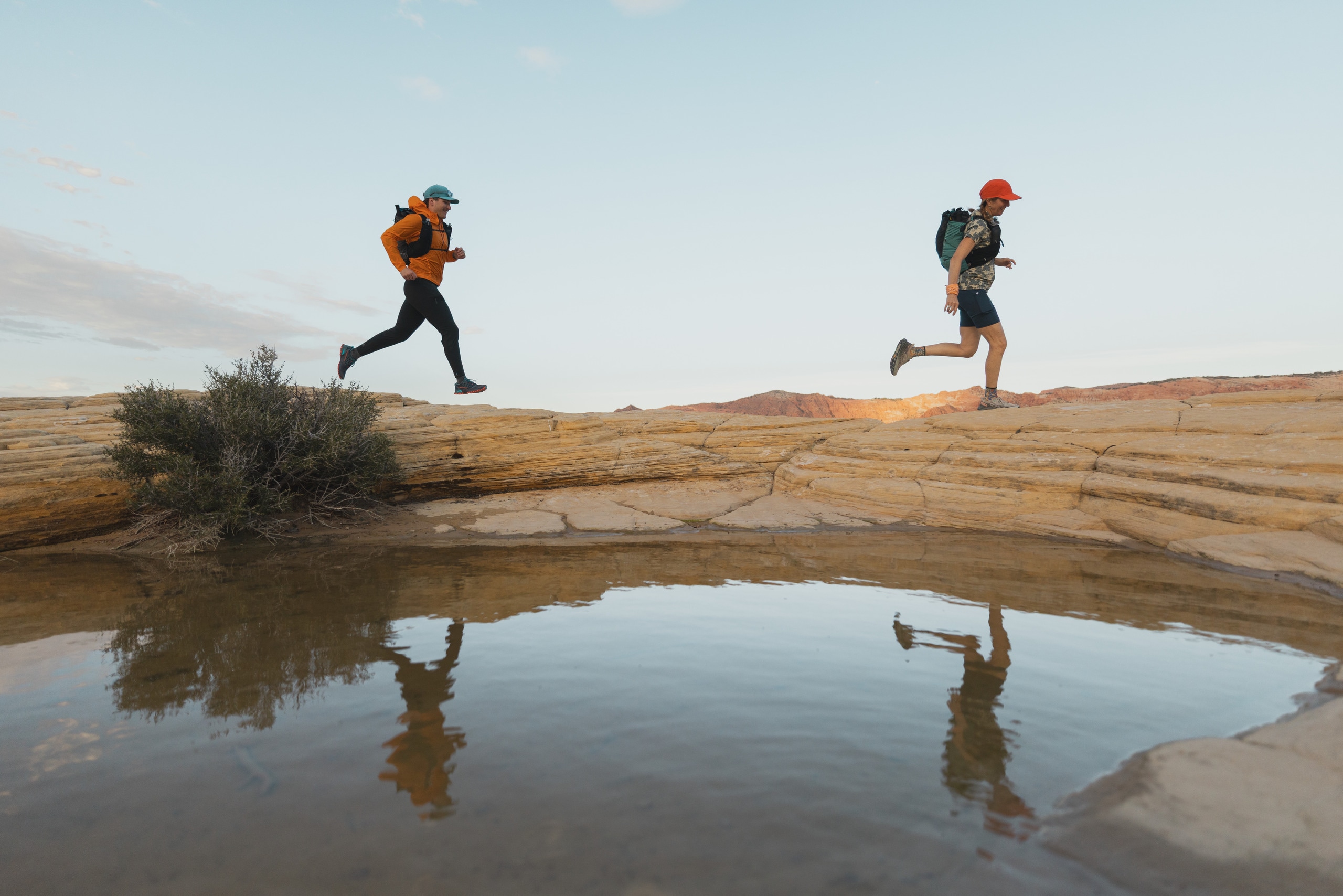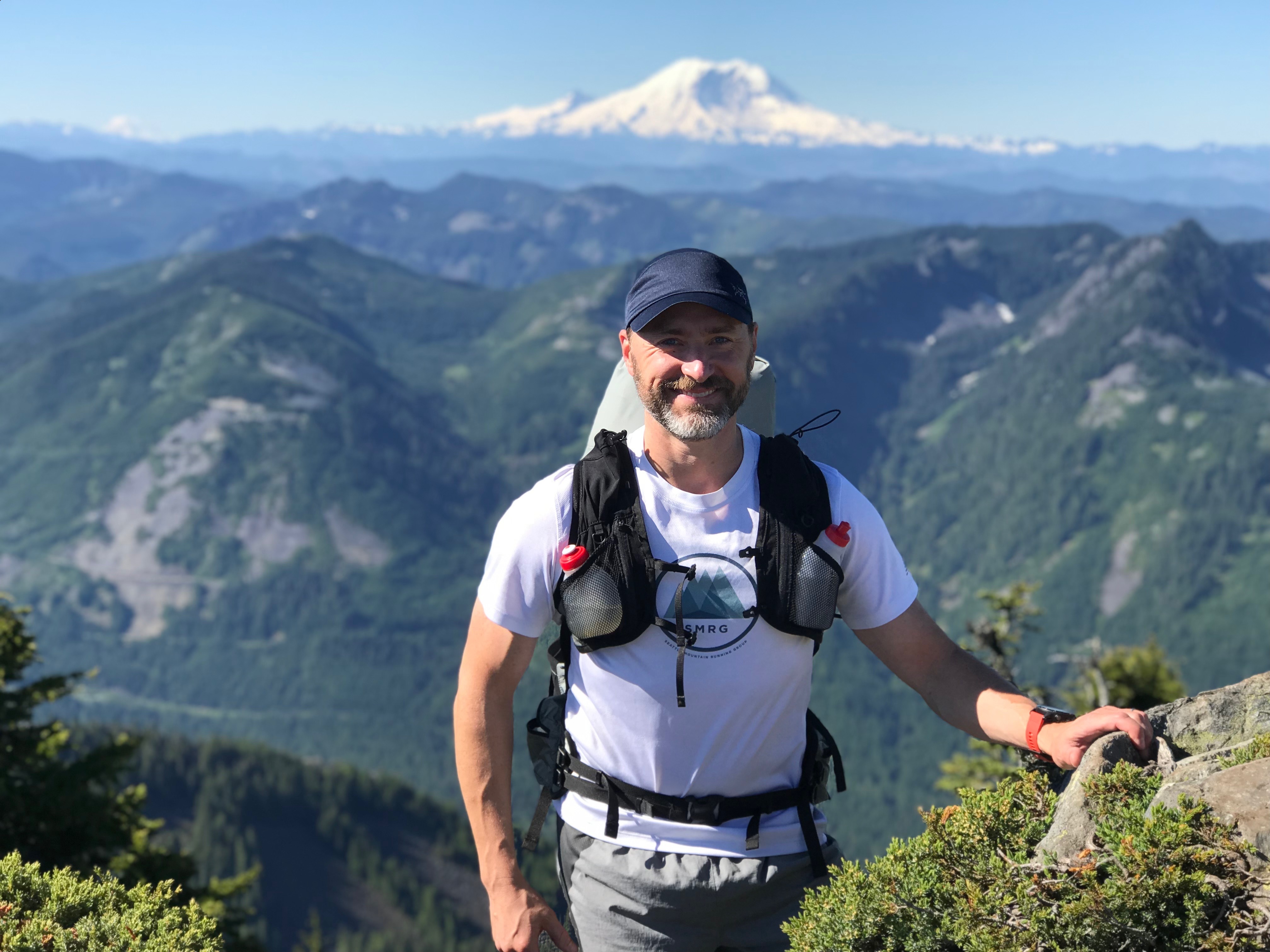What is fastpacking? Fastpacking is distance trail running and ultralight backpacking rolled into one epic outdoor adventure. You're moving fast—mostly running or jogging, at times power hiking—while covering long distances and carrying just enough essentials for a multiday journey. Moving swiftly with a light kit lets you escape the crowds, reach deeper into the backcountry and stay out longer than if you were just trail running.
One of the biggest draws is being able to cover more ground and see more in a shorter time than you otherwise would be able to if you're just backpacking or trail running. With light overnight gear on your back, you run, set up camp, sleep, wake up, run and do it all over again. It's about pushing your comfort zone, challenging yourself mentally and physically and truly immersing yourself in wild surroundings. There's something incredibly freeing and empowering in relying on your own feet to cover all that distance in a shorter amount of time.
If fastpacking piques your interest, here are some basics to help you get started:
Tips to Get Started Fastpacking
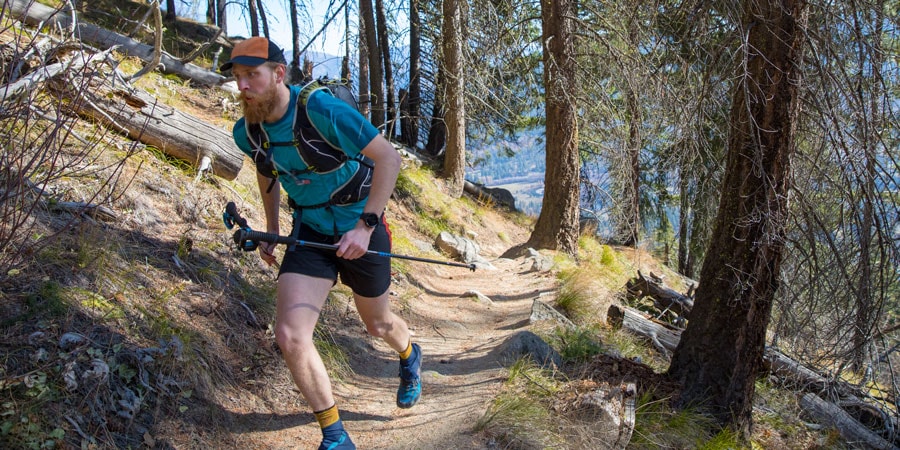
- Build up your fitness: You'll have a more enjoyable experience if you're in a place of better training or fitness. It's best if you are comfortable first with trail running without a pack. Running long miles over rough terrain is physically (and mentally) challenging. Build up your fitness and endurance by hiking and trail running. Do longer back-to-back hiking or running days so you're used to constantly being on your feet. Run or hike similar elevation that you might cover on a planned trip. If you're already an avid trail runner or ultralight backpacker, you can still benefit from training if you're doing something bigger than you've ever done before. To learn more tips on how to increase distance, work on speed or cross train, read our series on Training for Trail Running.
- Dial in your gear: Since you're running with a loaded pack on your back, it's essential that you figure out the gear that works best for you. Get comfortable and confident with your equipment before you take it out on that first fastpacking trip. Once you have the kit you plan to take, try testing that gear on an overnight camping trip first to make sure it's in order before going the full distance. Getting some experience with lightweight backpacking also helps. We'll cover the basics of what to take below. Practice hiking and running with the pack you're planning to use.
- Partner up with someone who has done it: If you're new to fastpacking, consider going with someone who has been fastpacking before. It's not only more social and enjoyable to share an experience with someone, but there's safety in numbers. You also can pick up tips and benefit from that person's experience.
- Start small and work up to bigger adventures: Run your favorite local routes with the same weight and the same backpack that you plan on using. That allows you to fix any issues you may have with equipment before going farther afield. When you're ready to try out fastpacking, start with out-and-back trips closer to home. For your first time out, consider sticking to more familiar terrain or well-traveled routes. After that, you can venture out into more remote wilderness areas or travel to different states, regions or countries.
- Be realistic about your pace: If you're used to running at a certain pace, you may have to adjust your mindset to accept a slower pace. Carrying a pack in the mountains may mean you're not going to be able to move as quickly, so initially it helps to be realistic about your pacing.
- Consider safety: Let someone know where you're going and leave them a copy of your itinerary. Consider bringing an emergency messaging device it you're going deep into the backcountry. The Ten Essentials is a good place to start your planning.
What to Take Fastpacking
Fastpacking appeals to many because of its simplicity. You bring only the essentials needed for a multiday journey, aiming for items that are lightweight and versatile without skimping on safety. It takes planning and preparation to dial in the right gear for your specific trip goals.
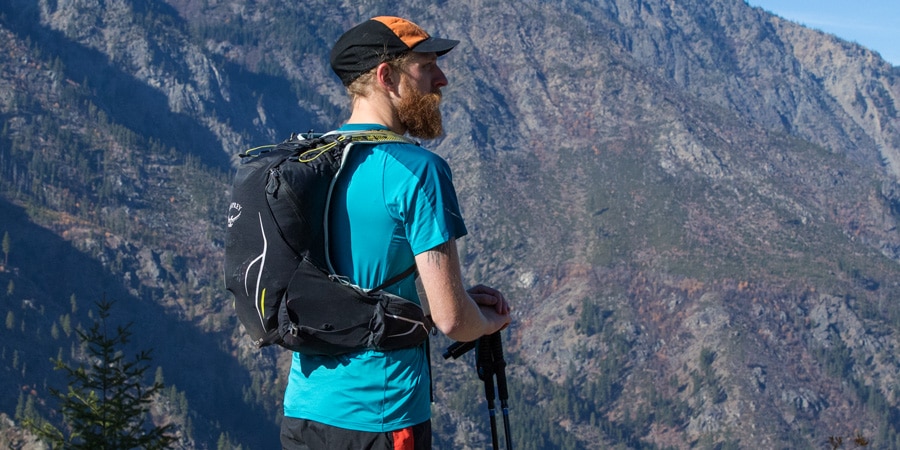
How much should your pack weigh? Pack weight will depend on how many days you're out, your personal preferences, the weather and season and other factors. On one extreme end, the most minimalist fastpacker may carry a 12-liter pack with a base weight of 10 pounds or less. (Base weight is how much your loaded pack weighs, not counting "consumables" such as food, water and fuel.) That person is willing to sacrifice comfort for ease of movement. On the opposite end, someone who looks forward to the luxury of a hot meal or a comfy sleep system may take a 30-liter pack with a base weight of 20 pounds. It will depend on your personal preferences, comfort level and ambitions.
Backpack: Your pack may be the most important gear you bring. Which pack you have will make a huge difference in comfort and mobility. Some packs may start to bounce when loaded, which could give you issues with chafing or lead to more fatigue in your shoulder areas. Some prefer to use hydration vests or backpacks designed for running. Others find a day pack that works for them. When you find an ultralight backpack that fits you, be sure to test it by loading it up with gear to see whether it's comfortable.
Clothing: Many people like to wear trail running clothes or other lightweight performance clothing that wicks away moisture and dries quickly. A waterproof and packable jacket is also an essential, as well as an extra pair of socks, shirt and shorts. A lightweight insulated jacket keeps you warm in colder weather or at higher altitudes and packs up small.
Trekking poles: If you plan on taking trekking poles, get used to running with them first. Trekking poles help stabilize loads and keep you in balance on downhills.
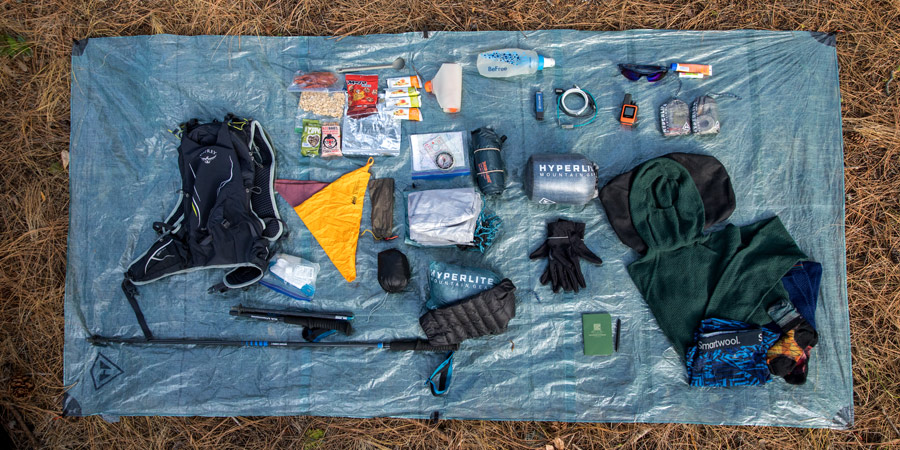
Be patient with gear: Ultralight gear is expensive, but there's no need to be intimidated by the price tag. Start with one or two items and trade up when money allows. Allow it to be a process over a period of years where you're selecting items bit by bit, slowly building up that arsenal of fastpacking equipment and getting to the place you want.
Water: Know where reliable water sources are and how far apart. Filter and carry water for your needs for the weather conditions. If you're regularly crossing streams, you may not have to carry a lot of water while traveling. Some popular lightweight options include squeeze-style filters, water filter bottles, chemical water treatments and straw water filters. If you're venturing far afield, consider having a second water filter as backup in case one fails. Read more about how much to drink and other tips in our Hydration Basics article.
Food: The food you eat while on the trail may differ from what you eat once at camp. On the trail, consider food that you can digest easily while moving and won't upset your stomach, such as energy bars. What works for one person may not work for you so experiment during training runs. To read more tips on what to eat, read our article on Nutrition Basics for Trail Running. To save weight, minimalists may choose to ditch the stove and eat no-cook foods. Others may boil water to rehydrate a freeze-dried or rehydrated meal.
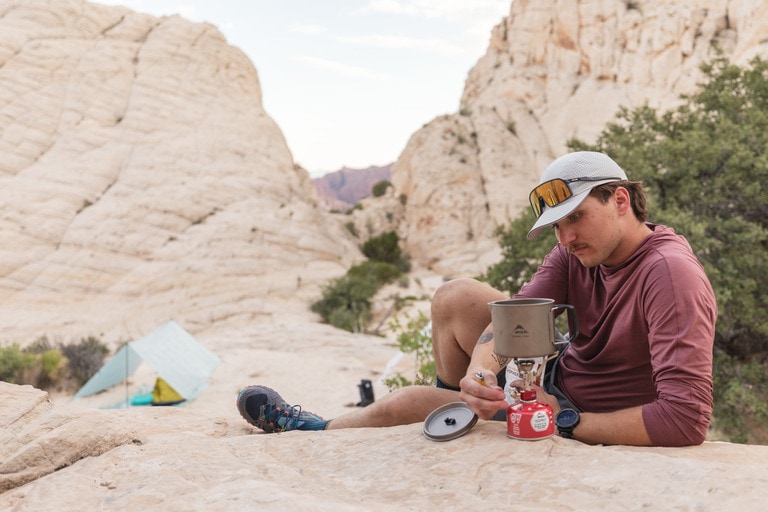
Shelter: The style of shelter you bring will depend on many factors, including weather conditions, your personal comfort and budget. Minimalists may prefer an ultralight tarp or a simple bivy; others may enjoy the full protection of an ultralight tent.
Sleep system: To cut down on weight, you can opt for a backpacking quilt rather than a traditional mummy sleeping bag. Quilts are designed to be used on top of a sleeping pad; they weigh less because they don't have hoods, bottom insulation or zippers, which are standard for most sleeping bags. Choose an ultralight sleeping bag if you don't mind the extra ounces for a good night's sleep.
For a list of other things to bring, reference our Ultralight Backpacking Checklist.
Tips for Planning a Fastpacking Trip
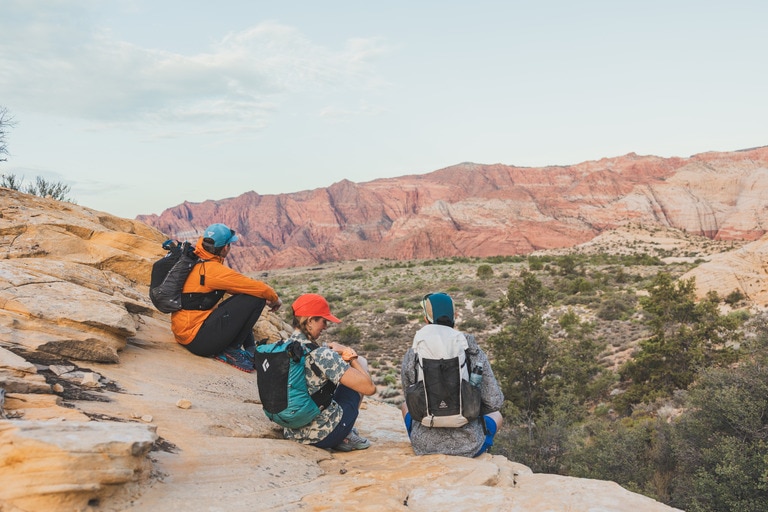
You can explore many trails fastpacking, whether you're planning a single night out near home or a multi-day loop to climb several mountains. You can fastpack anywhere you can hike. Here are some basic tips to plan your route:
- Research routes: Ask people you know who have fastpacked about their favorite routes, or connect with others online. Also, check in with local ranger districts about wild areas near you. Consider backpacking routes that you can use.
- Plan a route that matches your skill set and fitness level. If you're starting out, consider fastpacking in familiar terrain to give you some peace of mind and security. One way to start is to plan your daily distances around how many hours you can run in a given day, especially on consecutive days. Factor in more time if you're covering bigger elevations.
- Source your water: To save weight, carry less water and rely on drinking and refilling water at streams, creeks or rivers. But to do so, you need to know where the reliable water sources are. Check topo maps for water sources and talk to rangers for the water levels of those sources.
- Plan ahead for permits: As with planning for any backpacking trip, you'll need to research whether backcountry permits are required. Contact the relevant land manager or agency as you plan your trip.
- Know the weather conditions: Because you're relying on minimal gear and often venturing farther afield, it's essential to check the weather forecast. You don't have to plan for a worst-case scenario, but it's good to know in advance what to pack for the weather conditions.
- Guidebooks and websites: Consult guidebooks and online resources for route ideas and recent trip reports. Many hiking or backpacking guidebooks and websites offer trail information that's useful for fastpacking.
